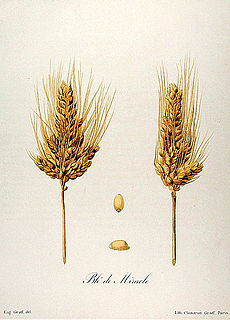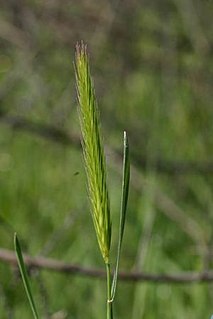
Ploidy is the number of complete sets of chromosomes in a cell, and hence the number of possible alleles for autosomal and pseudoautosomal genes. Sets of chromosomes refer to the number of maternal and paternal chromosome copies, respectively, in each homologous chromosome pair, which chromosomes naturally exist as. Somatic cells, tissues, and individual organisms can be described according to the number of sets of chromosomes present : monoploid, diploid, triploid, tetraploid, pentaploid, hexaploid, heptaploid or septaploid, etc. The generic term polyploid is often used to describe cells with three or more chromosome sets.

Polyploidy is a condition in which the cells of an organism have more than two paired (homologous) sets of chromosomes. Most species whose cells have nuclei (eukaryotes) are diploid, meaning they have two sets of chromosomes—one set inherited from each parent. However, some organisms are polyploid, and polyploidy is especially common in plants. Most eukaryotes have diploid somatic cells, but produce haploid gametes by meiosis. A monoploid has only one set of chromosomes, and the term is usually only applied to cells or organisms that are normally haploid. Males of bees and other Hymenoptera, for example, are monoploid. Unlike animals, plants and multicellular algae have life cycles with two alternating multicellular generations. The gametophyte generation is haploid, and produces gametes by mitosis, the sporophyte generation is diploid and produces spores by meiosis.

Antirrhinum is a genus of plants commonly known as dragon flowers or snapdragons because of the flowers' fancied resemblance to the face of a dragon that opens and closes its mouth when laterally squeezed. They are native to rocky areas of Europe, the United States, Canada, and North Africa. It is widely used as an ornamental plant in borders and as a cut flower.

Acorus is a genus of monocot flowering plants. This genus was once placed within the family Araceae (aroids), but more recent classifications place it in its own family Acoraceae and order Acorales, of which it is the sole genus of the oldest surviving line of monocots. Some older studies indicated that it was placed in a lineage, that also includes aroids (Araceae), Tofieldiaceae, and several families of aquatic monocots. However, modern phylogenetic studies demonstrate that Acorus is sister to all other monocots. Common names include calamus and sweet flag.

Dactylis is a genus of Eurasian and North African plants in the bluegrass subfamily within the grass family. Dactylis is native to North Africa, they are found throughout the world, and are an invasive species. They are known in English as cock's-foot or cocksfoot grasses, also sometimes as orchard grasses.

During 10,000 years of cultivation, numerous forms of wheat, many of them hybrids, have developed under a combination of artificial and natural selection. This diversity has led to much confusion in the naming of wheats. This article explains how genetic and morphological characteristics of wheat influence its classification, and gives the most common botanical names of wheat in current use. Information on the cultivation and uses of wheat is at the main wheat page.

Dactylis glomerata, also known as cock's-foot, orchard grass, or cat grass (due to its popularity for use with domestic cats) is a common species of grass in the genus Dactylis. It is a cool-season perennial C3 bunchgrass native throughout most of Europe, temperate Asia, and northern Africa.

Tolmiea menziesii is a species of flowering plant in the family Saxifragaceae. It is known by the common names youth on age, pick-a-back-plant, piggyback plant, and thousand mothers. It is a perennial plant native to the West Coast of North America, occurring in northern California, Oregon, Washington, British Columbia and southern Alaska. It occurs as a naturalised plant or garden escape in Scotland, parts of Wales, Northern Ireland and northern and western parts of England.

Chelone glabra, or white turtlehead, is a herbaceous species of plant native to North America. Its native range extends from Georgia to Newfoundland and Labrador and from Mississippi to Manitoba. Its common name comes from the appearance of its flower petals, which resemble the head of a tortoise. In fact, in Greek, chelone means "tortoise" and was the name of a nymph who refused to attend the wedding of Zeus and was turned into a turtle as punishment. Its natural habitat is wet areas, such as riparian forests and swamps.

Hordeum brachyantherum, known by the common name meadow barley, is a species of barley. It is native to western North America from Alaska to northern Mexico, coastal areas of easternmost Russia (Kamchatka), and a small area of coastal Newfoundland.

Asplenium trichomanes, the maidenhair spleenwort, is a small fern in the spleenwort genus Asplenium. It is a widespread and common species, occurring almost worldwide in a variety of rocky habitats. It is a variable fern with several subspecies.

Veronicastrum is a genus of flowering plants in the family Plantaginaceae. In some taxonomy systems, Veronicastrum species have been placed within the genus Veronica. The most commonly cultivated species is Veronicastrum virginicum, which is native to the Eastern parts of North America. Veronicastrum has previously been part of the family Scrophulariaceae. However, following recent genetic studies, several genera were transferred to other families including Veronicastrum, transferred to Plantaginaceae.

Thelesperma is a genus of North American and South American plants in the cosmos tribe within the sunflower family. Greenthread is a common name for plants in this genus.

Polypodium appalachianum is a fern species native to eastern North America. Sometimes called the Appalachian polypody or Appalachian rockcap fern, it is very similar in appearance to Polypodium virginianum. For years, P. virginianum—long considered a variety of the British Polypodium vulgare—was recognized as having cryptic races, with diploid, triploid, and tetraploid representatives. Since the triploid specimens bore abortive spores, it was apparently the hybrid between the diploid and tetraploid groups. In 1991, it was resolved that the type of P. virginianum was the tetraploid series, and that it is an allotetraploid species of hybrid origin, with the diploid species as one parent. The diploid species was then named P. appalachianum. The other parent of P. virginianum was found to be Polypodium sibiricum. The tetraploid of hybrid derivation tolerates warmer climates than either parent.

Pellaea glabella is the smooth cliffbrake. For much of pteridological history, it was regarded as a reduced form or variety of Pellaea atropurpurea. P. glabella is known to exist in two cryptic species, one diploid and one tetraploid. The diploid reproduces sexually, while the tetraploid is normally apogamous. It is now known that the tetraploid form of the species is one of the parents of the original hybrid P. × atropurpurea that became the apogamous species.

Atriplex gardneri is a species of flowering plant in the amaranth family known by the common name Gardner's saltbush. It is native to western North America from British Columbia to Saskatchewan in Canada south to Nevada and New Mexico in the United States. The specific epithet of the species, gardneri, is missnamed after its first collector, Alexander Gordon. The naturalist Alfred Moquin-Tandon was under the impression that Gordon's last name was Gardner.

Chelone obliqua, the pink turtlehead, red turtlehead, or rose turtlehead, is a perennial flowering plant belonging to the family Plantaginaceae. This uncommon wildflower is endemic to the United States, where it is found in the Midwest and southeastern states.

Alloteropsis semialata, known commonly as black seed grass, cockatoo grass, donkersaad gras, swartsaadgras, tweevingergras, and isi quinti, is a perennial grass distributed across much of tropical and subtropical Africa, Asia and Australia, as well as Papuasia and Madagascar. The genus name Allopteropsis comes from the Greek words "allotrios", meaning "belonging to another", and "opsis", meaning appearance. The specific epithet semialata comes from the Latin "semi" (half) and "ala" (wing), referring to the winged margins of the upper glume.

Frank Harlan Lewis, known professionally as Harlan Lewis, was an American botanist, geneticist, taxonomist, systematist, and evolutionist who worked primarily with plants in the genus Clarkia. He is best known for his theories of "catastrophic selection" and "saltational speciation", which are closely aligned with the concepts of quantum evolution and sympatric speciation. The concepts were first articulated in 1958 by Lewis and Peter H. Raven, and later refined in a 1962 paper by Lewis in which he coined the term "catastrophic selection". In 1966, he referred to the same mechanism as "saltational speciation".





















